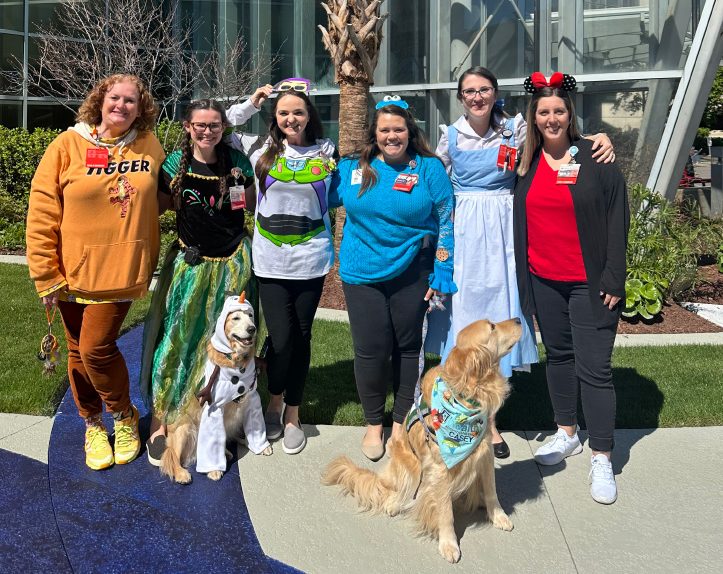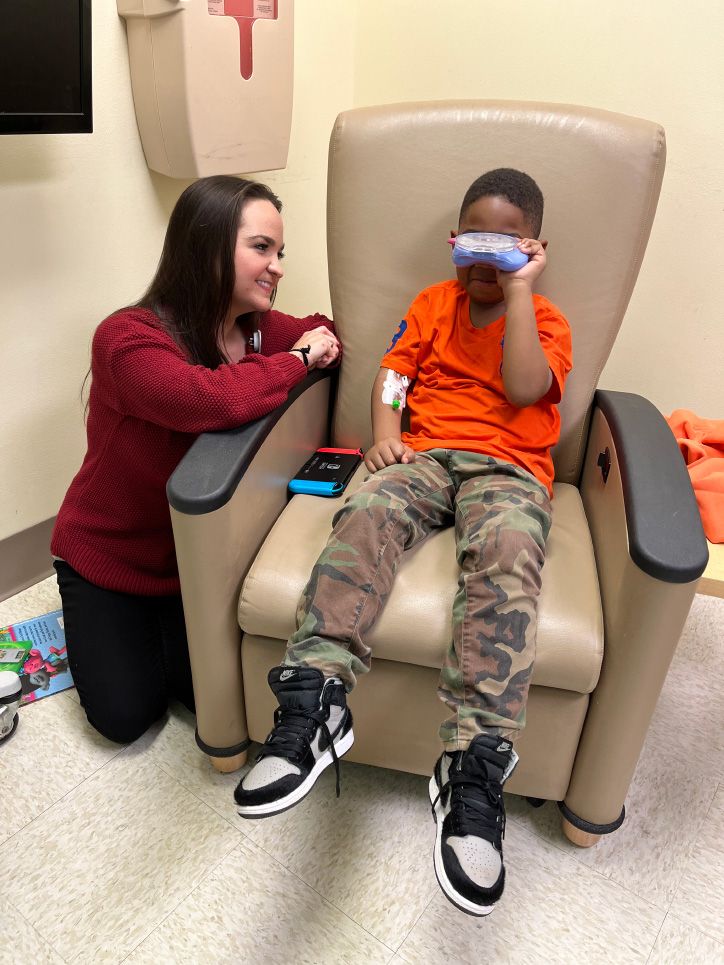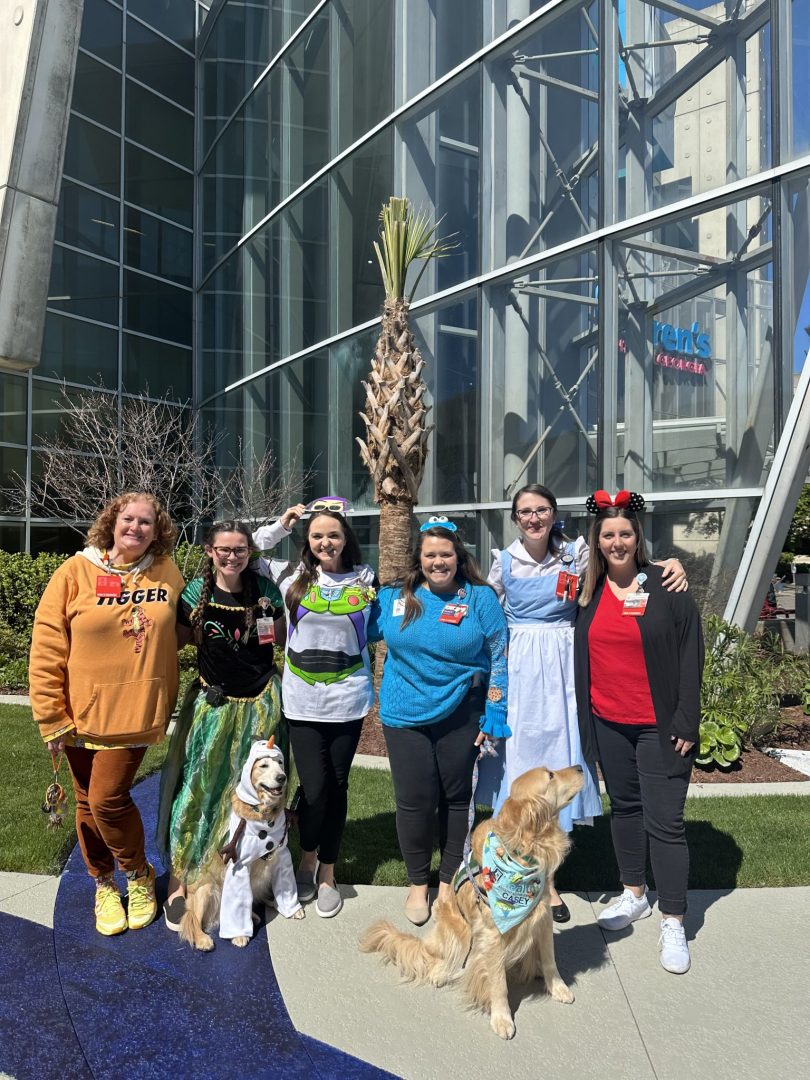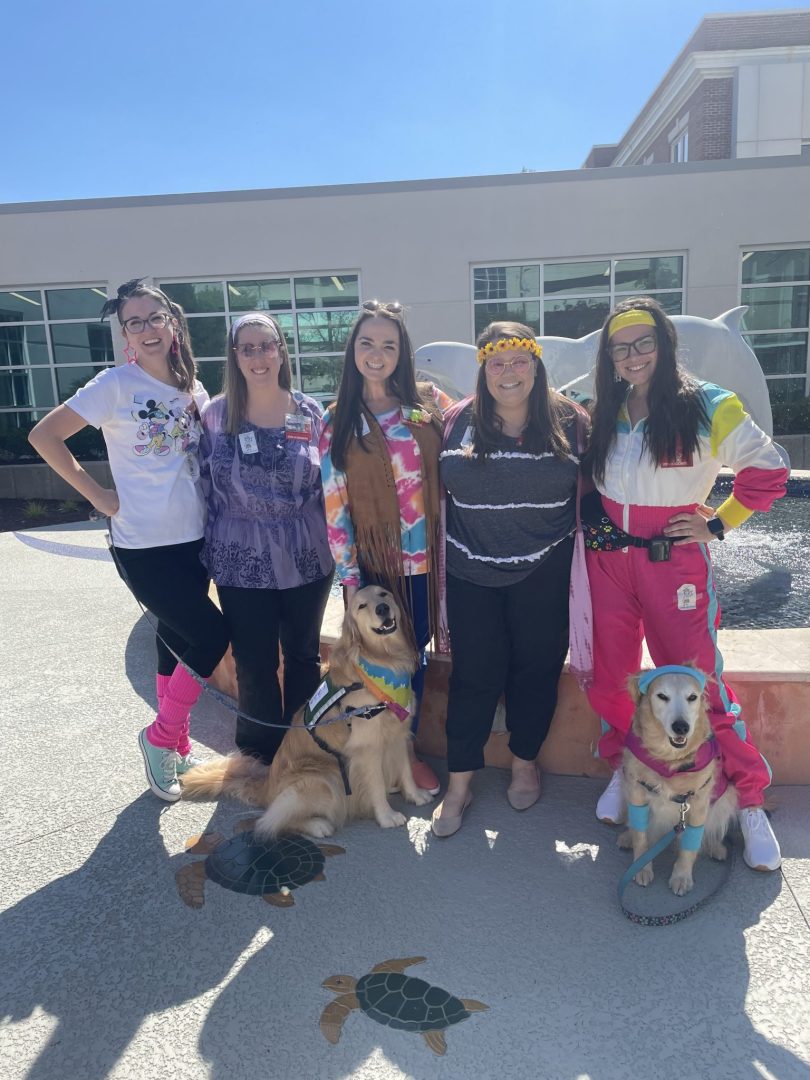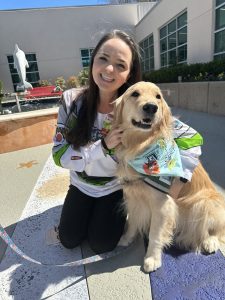Walk a mile in Stephanie Grayson’s shoes and you’ll probably need a breather. Walk seven miles in her shoes, and you might start to get a sense of her everyday routine at the Children’s Hospital of Georgia.
Grayson is one of six child life specialists at the hospital. These specialists move from room to room, checking in on each patient and what they might need to overcome some of the challenges they’ll face during their hospitalization.
Each specialist helps patients trust their doctors and can help distract some when they’re receiving medical care. This can help distract and relax the patient, while also explaining what’s going on with them.
“We decrease stress for our friends and their families and help improve the environment, we can see up to 65 kids a day so it’s a lot of figuring out what that patient needs and keeping them calm and aware of what’s going on around them,” said Grayson.
In order to fully understand why their job is critical, you have to imagine yourself at 5 years old.
You walk with your parent or guardian into the Children’s Hospital of Georgia and aren’t feeling well. You might be sick or hurt. Maybe this is your first time in the hospital. You’re surrounded by machines, strangers and unknowns; it’s easy to see why you might be a little scared.
This is where the child life specialist comes in.
“The first time they come in they may be freaking out because they’re thinking about shots or bloodwork, but the next time they come back they’re asking for some of the stickers of coloring books we have. I always take that as a win,” said Grayson.
Each specialist has an arsenal to distract. Books (iSpy, short stories, picture puzzles), toys (spinning lights, ViewMasters, microphones), iPads and games. You name it – they probably have it.
The interventions while the patient receives medical care is one part of their job, but so is their rapport with their patients. Some of these patients will return to the hospital for constant care, which means they see them through good days and bad. This makes knowing each patient’s tendencies and needs important.
“There are two types of copers, an avoidant coper and an active coper. Active copers like to watch what is going on with them and avoidant copers like to be distracted. Sometimes they’ll want to look at a book, sometimes they just want to chat. It helps us bridge the gap between medical staff and family,” said Grayson.
Take August Miles, for example. August first came into the Children’s Hospital four years ago. He was referred by neurologists to come to the hospital, with the belief he had Multiple Sclerosis. Doctors at Children’s quickly realized the initial diagnosis wasn’t correct. Doctors instead found he had been suffering from Juvenile Dermatomyositis, an inflammatory disease that causes muscle strength loss and rashes.
Grayson has seen August for years and knows he’s an active coper (although he does like to be distracted from time to time). She’s also seen the major leap his health has taken since his first stay.
“He’s not the same today as he was when he first got in,” said Denise Miles, August’s mother. “He could barely hold his head up and definitely wasn’t running around.”
August and his family travel from Greenwood, South Carolina to be treated with steroids and an infusion, a trip that takes at least an hour.
While August’s health has been through its ups and downs, one constant has been Grayson. She already knows what he wants, and what he doesn’t. She knows August likes to see the needle for the infusion inserted but wants to be distracted later. She knows the games they played their last visit on his Nintendo Switch, and which ones are his favorite.
All this helps August ease into his care, which can be physically and emotionally draining. He’s able to laugh and look forward to his visits rather than dreading them.

August Miles had some fun at Camp Joint Venture, one of the camps which many child life specialists volunteer at.
“He’s a goofball too so a lot of what he does now is like trial and error, because a lot if what he does now, he couldn’t do before,” said Miles. “Stephanie has been there since the beginning, she’s been great with him, and his transformation has been incredible.”
The child life specialists also have other roles within the hospital. One is in charge of Cayce and Nugget, the Children’s Hospital’s facility dogs. Another handles some of the special events around the hospital. Grayson handles the many donations that take place at the hospital.
They’re also usually involved in one of the 5 camps for the Children’s Hospital patients: Rainbow, Joint Venture, Kidney Bean, Wheeze-N-Sneeze and Strong Heart. Almost all are involved in one of these camps. They know what it means for those patients who can finally be themselves in a safe environment.
Every day is a new adventure for the child life specialists. They are there to give a quiet knock on a patient’s door, ask how they’re doing and what they need to keep their spirits high. You’d be looking for something fun to do in the hospital too.
March is Child Life Month, which is dedicated to celebrating those specialists and professionals who work in hospitals across the country in this line of work. We want to thank them for their devotion to our patients and to the Children’s Hospital of Georgia.
